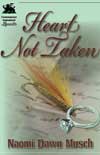Using Comparisons Brings Life to Dead Adjectives
Whether you are writing a short story, a novel, or a non-fiction essay, you will need to give description, and often times to do so you will use comparison. It’s been said that “nothing means anything except as compared to something else”. In other words, if you say, “The house was big,” you make the reader ask, how big? Compared to what? If you tell them that the trip was long, they’ll want to know how long. Compared to what? If you say the job was hard, they’ll inquire, how hard? Compared to what? If you envision a beautiful dress and say that it was very blue, your reader will say, what kind of blue? Compared to what?
Comparisons are called similes and metaphors. You use them to help the reader visualize something they couldn’t see before, or to explain something that is unknown by showing them something that is known. For example, rather than saying the house was big, you might say that the house was as big as a castle compared to the tiny shack she lived in with her grandfather. I didn’t change the fact that the house was simply big, but saying it was “as big as a castle” to the character helped us see it the way she did. I might continue the description with something further: She wondered, did really only one family live inside? There were so many windows and walkways leading to doors on either end that it seemed surely two or three families must have apartments inside.
Or how about that dress? What kind of blue was it? Blue like the sky on a cloudless day, or deep blue, like dusk on a summer’s night? Maybe it was as blue as the sapphire necklace the hero gave her.
He went on a long trip . . . Well; it might be helpful to know what kind of story we’re telling. Say we’re talking about a Tom Sawyer type individual, who grew up never getting far from his home on the river. Maybe a long trip would simply be to the next town, twenty miles away. Maybe we’d say, “It was the longest trip of his life, being as how he’d never been past Cooley’s Ridge before” – kind of like when the hobbits had never gone outside the shire . . .
When we use like or as, we’ve used a simile. We are saying that something is similar to something. When we compare something even more boldly, we use a metaphor. We say something is indeed something else, even though it physically cannot be true. For instance, instead of using a simile to say, “It looked like a storm was brewing between his brows”, (though that’s pretty good) we might say, “A storm brewed between his brows.” It tells us the same thing — that someone is getting angry — but it does the job a little more forcefully.
Good fiction, and even good non-fiction, makes ample use of good comparisons while not becoming so heavy handed with them that we can’t see the story for the metaphor. You can overdo a good thing. The simple fact is that using comparison helps to put things in context. It helps to make your point, to clarify a picture, to put the reader in the scene or sense the sight, the smell, and the feel of what you’re showing them. It helps the writer to accomplish the one thing that should always be the writers’ mantra: Show me what it looks, feels, tastes, smells, sounds like; don’t just tell me that it does.
EXERCISE:
Search through your current work-in-progress for places that comparison would bring more visualization to the story. See if you can bring think of metaphors or similes that would liven up boring adjectives that merely tell.
Also, as you read for pleasure, note comparisons that authors are giving you to help you live in the story.
















Speak Your Mind
You must be logged in to post a comment.